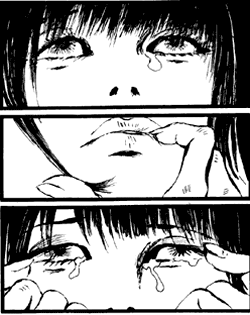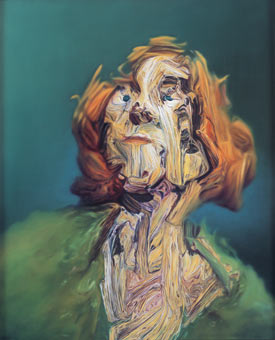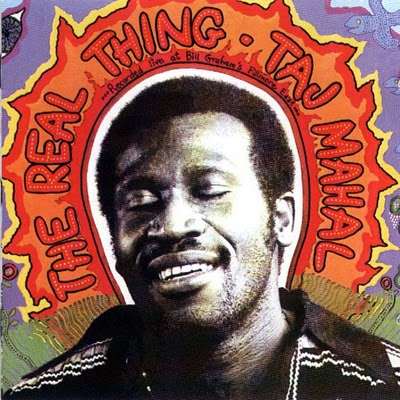Serendip is an independent site partnering with faculty at multiple colleges and universities around the world. Happy exploring!
Notes Towards Day 7: "The Real Thing"

![]()
"... can't beat the real thing"
Calamity's Notes on our Class Discussion
I. coursekeeping
name test, continuing...
aseidman missed her recording opportunity (sign up again);
on for today: Calamity
featuring a few more webpapers
discuss this matter of my commenting in public
(and your writing back...? and to one another...?)
On Wednesday, we will begin discussing The Portrait of a Lady:
please read the first quarter of the novel--and don't forget to
post a passage or two in your commonplace book:
we will need some guideposts along the way, and I
should not be generating them alone....
II. looking back @ "The Turn of the Screw"
(archetypal for the story of an over-prepared teacher,
whose multiple readings silence his students, from
Women's Ways of Knowing:The Development of Self, Voice and Mind (1997):
Faith, in her sophomore year, said, "Last night, the professor gave us his interpretation of Henry James's Turning of the Screw, and after it he said, 'All right. This is my interpretation. You should be ripping it apart. You're sitting there. Come on, start ripping at it'....Well, I did a little, but basically I agreed with what he was saying."
It is easy to feel compassion for this beleagered man. He has probably toiled much of the previous night over his interpretation. He is excited about it and imagines that the students, too, will get excited. He imagines hands waving, voices raised in passionate debate. Instead, he sees rows of bowed heads, hears only the scratching of twenty-five pencils. The teacher does not wish to deposit his words in the students' notebooks, but the students insist upon storing them there. They treat his words as sacrosanct. He cannot understand why they will not risk a response.
But the teacher himself takes few risks. True to the banking concept, he composes his thoughts in private. The students are permitted to see the product of his thinking, but the process of gestation is hidden from view. The lecture appears as if by magic. The teacher asks his students to take risks he is unwilling--though presumably more able--to take himself. He invites the students to find holes in his argument, but he has taken pains to make it airtight. He would regard as scandalous a suggestion that he make the argument more permeable. He has, after all, his "standards," the standards of his discipline, to uphold, and he is proud of the rigor of his intepretation. The students admire it, too. It would seem to them an act of vandalism to "rip into" an object that is, as Freire might say, so clearly the teacher's private property....so long as teachers hide the imperfect processes of their thinking, allowing their students to glimpse only the polished products, students will remain convinced that only...a professor could think up a theory.
...students need opportunities to watch...professors solve (and fail to solve) problems....they need models of thinking as a human, imperfect, and attainable activity....In Friere's 'problem-posing' method, the object of knowledge is not the private property of the teacher. Rather, it is 'a medium evoking the critical reflection of both teacher and student.' Instead of the teacher thinking about the object privately and talking about it publicly so that they students may store it, both teacher and students engage in the process of thinking, and they talk out what they are thinking in a public dialogue (pp. 214-215).
What does the title of James's story add to this conversation?
What does it tell us?
What direction does it point us towards?
(As Shoshana Felman asks,
"What does the act of turning a screw have to do with literature?
What does the act of turning a screw have to do with psychoanalysis?"
Oxford English Dictionary:
d. turn of the screw: an additional twist to tighten up the hold; an extra twist given to a thumbscrew by way of increasing the torture (in quots. fig.). 1796 [see SCREW n.1 2a]. 1853 DICKENS Bleak Ho. xxiv. 331 (heading) A turn of the screw. 1898 H. JAMES Turn of Screw 4 If the child [in a ghost story] gives the effect another turn of the screw, what do you say to two children? 1940 Manch. Guardian Weekly 1 Mar. 175 Even more far-reaching schemes of increasing direct taxation..are certain to be realised..whenever the psychological ground is favourable for this further turn of the screw. 1973 Listener 14 June 785/2 The first turns of the screw on the car commuter are already being prepared. The GLC wants to put up parking fines from �4 to �20.
At the beginning, Douglas asks,
"If the child gives the effect another turn of the screw,
what do you say to two children--?"
Towards the end, the governess reflects that she
"could only get on at all ... by treating my monstrous ordeal as a push in a direction unusual, of course, and unpleasant, but demanding, after all, for a fair front, only another turn of the screw of ordinary human virtue."
Fabelhaft also flagged this passage:
"my equilibrium depended on the success of my rigid will"
T.J. Lustig calls this an "odd mechanistic metaphor:
centripetal--restriction, intensification, enclosure, enforcement, constraint."
Is that the final "turn of the screw"?--as "speculations become a conclusion" (Sussman)
--as the governess "comes to believe too vehemently in her constructions
of an event that remains remains rigorously unknowable" (Kukacher)
--as, faced with blanks, the unrepresentable,
the governess begins to elaborate (Lustig)
--does the critical debate (unwittingly?)
participate in/act out/reproduce the text?
--does the conscious psychoanalytic reading
repress the unconscious it purports to explain?
--does the effort to 'see it all' exclude the unconscious?
--is the invitation to undertake a reading an
invitation to act like the governess,
to repeat the text by seeking to stop the meaning,
to arrest satisfaction,
to "get hold of the clue to this meaning"
(=illusion of "whole answer"?--Felman)
"HJ never seems aware of the amount of space he is wasting...
the as it were's and as we may say's"
--but maybe he is? maybe therein lies his "mastery"?
____________
....oh, btw: about that the elephant (sic) picking up a pea

From H.G. Wells 1915 satirical novel, Boon: James's “vast paragraphs sweat and struggle. … It is leviathan retrieving pebbles. It is a magnificent but painful hippopotamus resolved at any cost even at the cost of its dignity upon picking up a pea which has got into a corner of its den. Most things it insists are beyond it but it can at any rate modestly and with an artistic singleness of mind pick up that pea…”
A question we will be asking again over the next few weeks:
Is Henry James's prose worth (so) much of our time?
What's the pay-off?
IV. Multiple modern re-imaginings
(cf. aseidman: "Perhaps the short story was simply
the wrong genre for The Turn of the Screw.")
![]()
![]()
Mary Kuper's sketches of the English National Opera
production of Benjamin Britten's 1954 chamber opera,
using traditional British nursery rhymes
(Tom, Tom, the Piper's Son; Lavender's Blue) for the children's music;
"The Ceremony of Innocence is Drowned" (from Yeats' The Second Coming)
for Peter Quint and Miss Jessel's theme song;
for a taste: Opus Arte
other versions that emphasize the sexual relations among
the servants and the children....

Guido Crepax's 1989 graphic novel, Giro di Vite
Joyce Carol Oates 1992 short story,
"The Accursed Inhabitants of the House of Bly"
reimagined from the ghosts' point of view:
"makes explicit everything that is ambiguous"
(pedophilia, homosexuality, erotic melancholia...)
______________________
III. and now for (an earlier text,) "The Real Thing"...
where critics (btw) have said that "the texture of the writing is simpler"
than the "normal" James, so simple as to constitute "an obvious allegory."
Let's see...
What is this story "about"?
How is it structured?
How does it function?
In his Notebooks, James wrote that the story should be "a magnificent lesson":
"the little tragedy of good-looking gentlefolks ... now utterly unable to do anything ... could only show themselves, clumsily, for the fine, clean, well-groomed animals that they were, only hope to make a little money by ... just simply being .... It must be an idea -- it can't be a "story" in the vulgar sense of the word. It must be a picture; it must illustrate something .... "
What does it illustrate?
(Do stories "illustrate lessons"?
Should they?)
For whom is the lesson intended?
Why might it be magnificent?
Sam Whitsitt, A Lesson in Reading: Henry James's "The Real Thing,"
The Henry James Review 16.3 (1995) 304-314:
The problem for the reader ... has always been that of figuring out
who the teacher is and who the taught --
not to mention what is supposedly being taught.
(Whitsitt:) whether the artist teaches a lesson to a pair of would-be models, or the would-be models teach a lesson to the artist remains an open question .... How one decides this issue is correlated with the level of complexity one assigns to the story. The reading that decides that the artist is the teacher also assumes that there is only one story to the story. The reading that decides that the artist is taught a lesson argues that there is another story to the story .... there are at least three stories to the story of "The Real Thing," including a lesson in reading, not only for the characters involved, but, perhaps more importantly, for the reader.
(What have we learned from reading "The Turn of the Screw"?)
Do we trust the narrator? Should we?
Can you (re)consider the story (as Joyce Carol Oates
did the "accursed inhabitants of the house of Bly"?)
from the Monarchs' point of view?
From the p.o.v. of the illustrator's "other," narrating self?

Glenn Brown, The Real Thing (2000)
(per Whitsitt) If you take the artist's word for it, then the telling of the story, is nothing more than reflecting faithfully "what happened" ... an assumption that the representation about the paradoxes of representation is not itself subject to those paradoxes (??).
Let's follow Whitsitt in looking @ three scenes:
1) the story opens with questions of mistaken identity:
narrator: illustrator, would-be portraitist
Monarchs: models, would-be gentleman and lady (or vice versa?)
"'Ah, you're--you're--a--?'
If there is something like a "real thing" ... perhaps it occurs
in this moment of not being able to bring out a word.
The narrator/illustrator goes on to play a double game:
to pay them as models, but render them as if they were sitters
(the "master" is taking a lesson in art from the models).
nothing is identical to itself... a differing within what Derrida would refer to as the "same," which concerns what one could call a faulted or fractured identity.
2) When the Monarchs re-appear @ the end of the story,
"she quieted me with a glance I shall never forget --
I confess I should like to have been able to paint that -- "
How can a glance be painted?
More pertinently, how could it be narrated?
[Derrida: demands a deference which always marks and opens up a difference.]
3) the narrator comments @ the end:
"...couldn't go on doing the wrong thing to oblige them.
Oh, it was the wrong thing, the stamp of the work for which they sat...."
!!!
![]()
It is not the Monarchs who are wrong for art; but the kind
of art practiced by the artist is not right for the Monarchs.
[don't miss the wish fulfilling reference to that "rarest of the novelists—who, long neglected by the multitudinous vulgar and dearly prized by the attentive...had had the happy fortune of seeing, late in life, the dawn and then the full light of a higher criticism—an estimate in which, on the part of the public, there was something really of expiation."]
4) Most importantly:
What the young artist rejected "in those days" as impossible for art,
the narrator now recuperates: the Monarchs are the subject of this tale.
What is the structure of a present inhabited by memory?
What form of pastness fractures the present moment?
5) What is "real" here? What is the nature of reality?
![]()
 |
 |
IV. I'd asked you to select a contemporary spin-off
(ad, song, album, play, story...?) for "The Real Thing,"
and come ready to explain the connections/divergences.
kkazan: The Real Thing is Not Always the Best Thing
exsoloamsolem: Rufus Wainwright ... song, 'Poses,' strikes me as being about the ultimate failure of attempts to inhabit a societal role that is impossibly slippery.
jrlewis: A dramatic interpretation of the mutability of human character is depicted in “Remorse,” the 11th episode of the 6th season of the television show, “House.”
Calamity: another servant ... who really posed as ... a princess ... was Mary Baker (nee Willcox), and in 1817 she fooled a British town into believing she was Princess Caraboo from the island of Javasu.
Fabelhaft: I Can't Believe It's Not Butter commercials and Vicar Dibley clip
MissArcher2: a doctor who now writes for House, who said "his new life is less different than it might seem -- both are about storytelling"; and the research Jodi Picoult does, in order to write about families and courtroom drama.
Calamity's Notes on our Class Discussion


